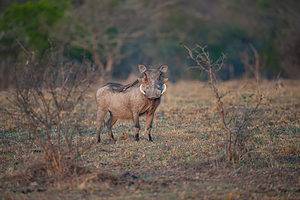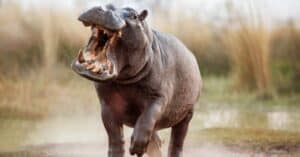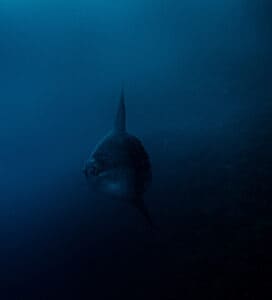Tucked away in the rugged landscapes of Colorado are lakes and rivers teeming with an astounding array of aquatic life. From the mysterious depths to the shimmering surfaces, these water bodies serve as crucial habitats for a multitude of species.
Each of these creatures plays a vital role in maintaining the health and balance of their respective ecosystems. Their behaviors, interactions, and even their mere presence enhance our understanding of the complexities of aquatic life. However, while the thrill of encountering these animals in their natural habitat can be exhilarating, it’s also essential to be aware of the potential risks some of them pose.

In this article, we discover the eight most dangerous animals swimming in Colorado’s lakes and rivers. We’ll shed light on their lifestyles, feeding habits, and unique characteristics, as well as explore the potential dangers associated with them. Finally, we’ll provide tips on how to safely interact with these creatures.
1. Northern Pike: The Sharp-Toothed Swimmer
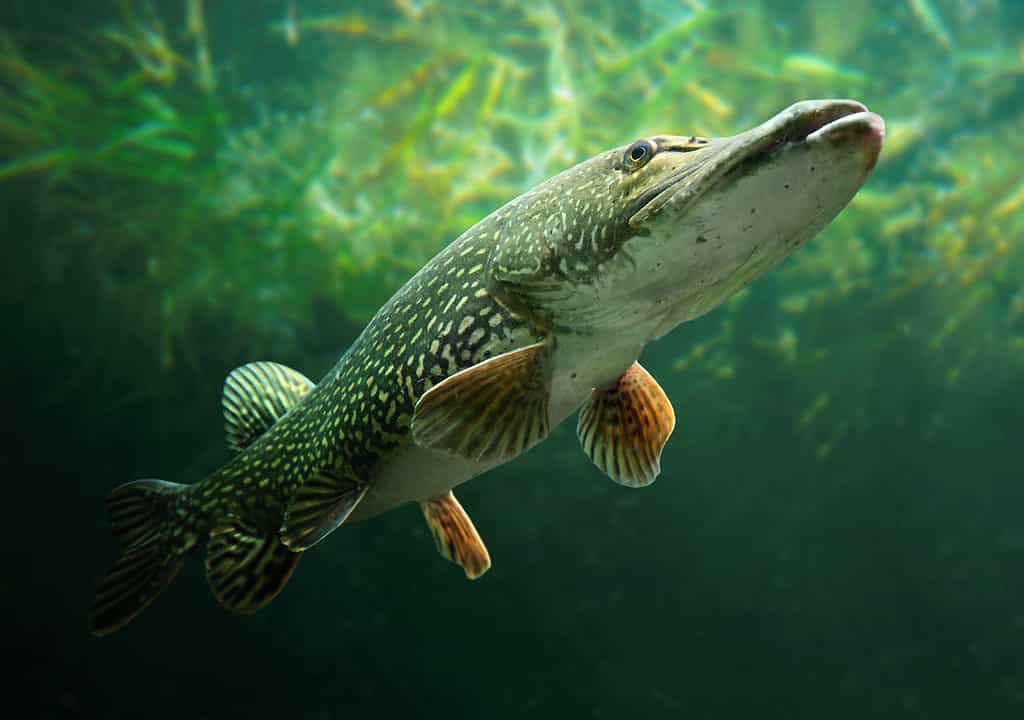
The northern pike is equipped with rows of sharp teeth designed to help it grasp and hold its prey.
©iStock.com/abadonian
Let’s start with the northern pike, an imposing fish that calls Colorado’s lakes and rivers home. Recognizable by its long, slender body and green-to-yellow coloration, this creature can grow up to 2-3 feet, with larger ones being quite a spectacle! It enjoys hanging out near submerged vegetation, where it can lay low and wait for its next meal.
An Underwater Powerhouse
The northern pike isn’t just another fish in the lake. It is a predator by nature, equipped with rows of sharp teeth designed for grasping and holding onto its prey. Combine this with its powerful, muscular body, and you have a creature that can burst forward with surprising speed to catch a meal. This is not a fish that other small aquatic creatures want to mess with.
Why Is It Dangerous?
So, let’s address the pressing question: why do we consider the northern pike a dangerous animal in Colorado? Well, for humans, this fish usually poses little threat—unless you get too close or try to handle it. Then, if cornered or caught, the northern pike might try to defend itself. That’s when those sharp teeth come into play. Anglers, in particular, need to be cautious, as a bite from a pike can lead to a painful wound.
Ensuring Safety Around the Northern Pike
How do you coexist safely with the northern pike? The answer lies in understanding and respecting its space. If you’re fishing and happen to hook one, it’s essential to handle it properly. Use a fish gripper tool, avoid placing your fingers near its mouth, and release it back into the water as quickly as possible. Remember, the northern pike is a vital part of our ecosystem. We can admire its beauty and respect its role without causing harm.
2. Tiger Muskie: The Hybrid Hunter of Colorado’s Waters
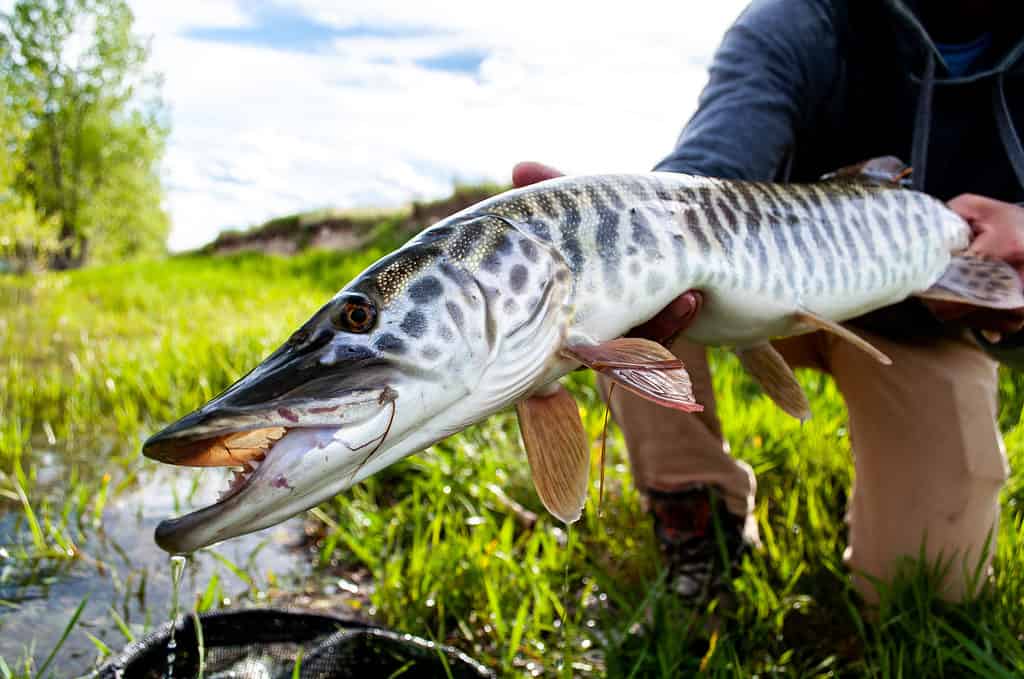
A
tiger
muskie is an apex predator whose diet consists of other fish, frogs, and even small waterfowl.
©Jennifer de Graaf/Shutterstock.com
Our next guest on this aquatic journey is the impressive tiger muskie. This toothy predator, a hybrid of the Muskellunge and northern pike, has an imposing presence in Colorado’s water bodies. With an elongated body sporting vertical stripes reminiscent of a tiger, it can reach lengths of up to 50 inches. It’s an awe-inspiring sight!
The Predator’s Predilection
The tiger muskie is as formidable as they come. This fish is an apex predator, using its sharp, canine-like teeth and powerful body to hunt and capture prey. Its diet mainly consists of other fish, but it also eats frogs and even small waterfowl. In addition, the tiger muskie is a stealthy hunter, often lurking in the shadows before launching a swift and deadly attack.
Unraveling the Danger
You might now be wondering, “How dangerous is the tiger muskie to humans?” Let’s clear that up. These fish typically mind their own business and avoid humans, focusing on their natural prey instead. But similar to the northern pike, a tiger muskie can pose a risk if it feels threatened or cornered. Especially for anglers who catch one and try to remove the hook, a bite from a tiger muskie can result in a nasty wound due to its sharp teeth.
Safety Measures
To ensure safe interaction with the tiger muskie, the rule of thumb is respect and caution. Anglers should use tools like pliers to remove hooks and avoid placing their hands near the fish’s mouth. If you’re a diver or swimmer, be mindful of your surroundings, especially in areas populated by these fish. By understanding their habits and tendencies, we can safely enjoy and coexist with the tiger muskie in their natural habitat.
3. Brown Trout: The Crafty Angler’s Challenge
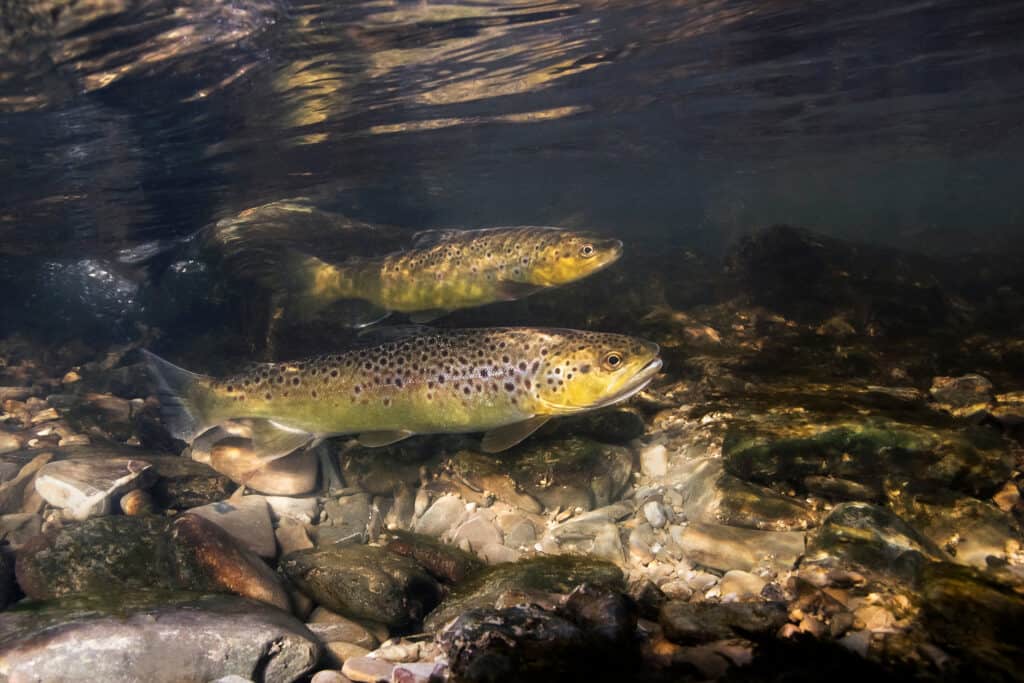
The brown trout is popular among Colorado anglers in spite of it being dangerous.
©Rostislav Stefanek/Shutterstock.com
Next on our list is the brown trout, an incredibly popular species among Colorado’s anglers. This fish is something to behold, with a distinctive golden-brown color and large black and red spots scattered across its body. The brown trout’s size can vary widely, but big ones can measure up to 40 inches!
The Tactics of a Cautious Predator
The brown trout may not be a “predator” in the same sense as the northern pike or tiger muskie, but don’t let that fool you. This fish is a crafty feeder that feeds primarily on insects, crustaceans, and other small fish. It prefers hunting at dawn and dusk, using its superb camouflage to blend in with the river bottom.
Decoding the Danger
What makes the brown trout a creature to consider in terms of danger? While it doesn’t pose a direct threat to humans, its sharp teeth and protective nature make it a force to be reckoned with, especially during the spawning season. As a result, anglers should be cautious when handling brown trout, as their teeth can lead to cuts and scrapes.
Safety with Brown Trout
When it comes to handling a brown trout, there are a few things to keep in mind. If you catch one, use a net and wet your hands before handling it to protect the fish’s slime layer, which is crucial for its health. Also, be mindful of the fish’s teeth and use a hook remover tool to safely unhook the fish. Remember, brown trout are a key part of Colorado’s water ecosystems and should be handled with care.
4. Rainbow Trout: The Vibrant Swimmer
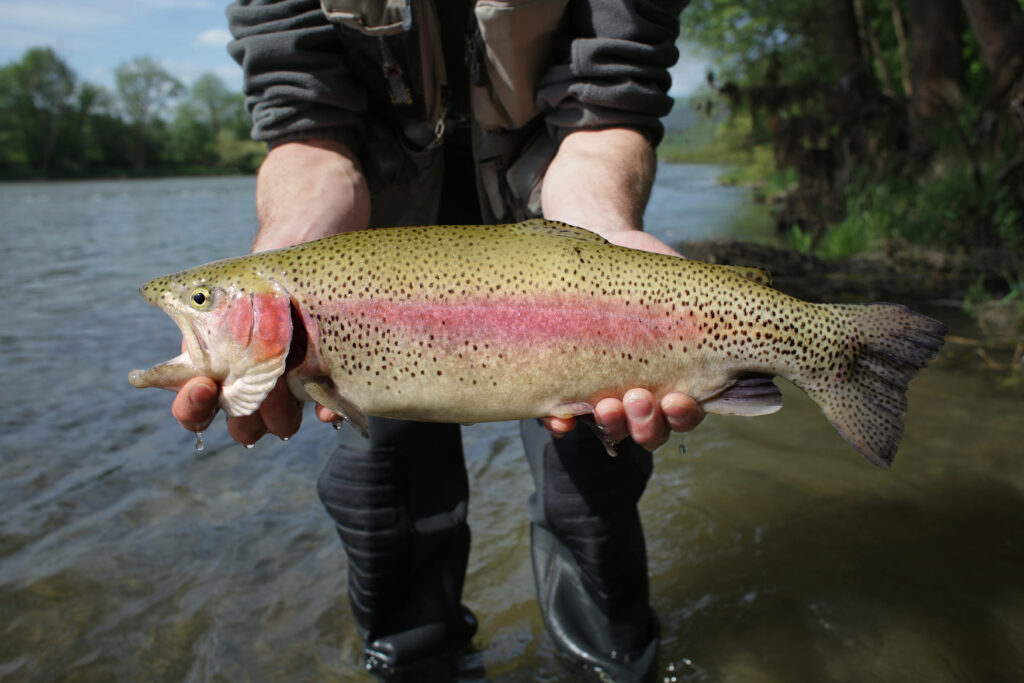
Anglers travel all over North America searching for large rainbow trout to catch.
©pictoplay/Shutterstock.com
Let’s delve into the world of the rainbow trout, a species famous for its striking appearance and thrilling fight. This beautiful fish boasts a wide spectrum of colors, with a dark olive green body, a pinkish stripe along its sides, and a silvery belly. The small black spots scattered across its body give it an almost stardust-like effect. These fish are usually about 20-30 inches long, but some reach astonishing lengths!
The Feeding Finesse
The rainbow trout is an opportunistic feeder, meaning it will eat whatever it can find! Its diet includes insects, smaller fish, and crustaceans. In addition, the rainbow trout often displays acrobatic leaps and lengthy runs during feeding or when hooked. These exciting behaviors make it a sought-after species for sports anglers.
The Hidden Hazard
So, what’s the potential danger with rainbow trout? Like their brown trout cousins, they don’t pose a direct threat to humans. However, during their vigorous fights, when hooked, they can potentially injure an unsuspecting angler. Their teeth may be small, but a hard thrash or bite could lead to a painful surprise.
Promoting Safe Interaction with Rainbow Trout
When it comes to safety around rainbow trout, it’s all about handling. If you’ve landed a rainbow trout on your fishing line, be sure to handle it with care. Wet your hands before touching the fish to protect its sensitive skin and scales. Use a hook remover tool to safely dislodge the hook and try to keep the fish in the water as much as possible during release. It’s our responsibility to ensure the safety and conservation of this beautiful species.
5. River Otter: The Playful Water Weasel

While river otters are quite joyful, if they feel cornered, they can become aggressive.
©iStock.com/Heather Burditt
Moving from fish to mammals, let’s meet the river otter. These creatures are an absolute joy to watch. With sleek, brown bodies, small ears, and expressive eyes, river otters are about 3-4 feet long, including their long, powerful tail. In addition, they are excellent swimmers, sliding effortlessly through the waters of Colorado’s rivers and lakes.
The Lifestyle of a Skilled Predator
River otters exhibit a playful nature but don’t let that fool you. They are efficient predators, feeding on a variety of fish, amphibians, crustaceans, and sometimes even birds or small mammals. They use their sharp teeth, agility, and quickness to capture their prey, usually hunting at night.
Deciphering the Danger
So, are river otters dangerous? Generally, these creatures are more interested in catching fish than in causing trouble for humans. However, if cornered or if their young are threatened, river otters can become aggressive. This is because they have sharp teeth and strong jaws, and a bite can result in a serious injury.
Safeguarding Interactions with River Otters
To ensure safe encounters with river otters, the best strategy is to observe from a distance. If you spot one during your water adventures, avoid approaching it, especially if there are young ones nearby. Never attempt to feed a river otter, as this can encourage harmful behavior. It’s important to respect these animals and their habitats to maintain a peaceful coexistence.
6. Beaver: The Industrious Water Architect
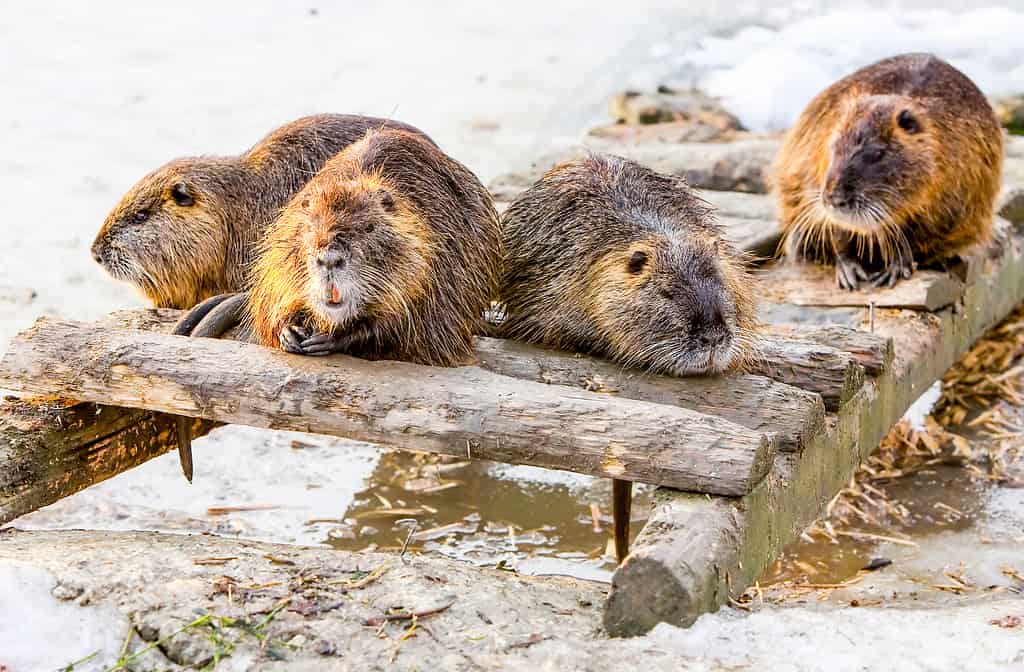
Beavers are generally non-aggressive but can deliver painful bites if threatened.
©Ammit Jack/Shutterstock.com
Shifting our focus to another charismatic mammal, we now spotlight the beaver. The beaver, a large rodent, stands out due to its industrious nature and remarkable ability to transform its environment.
With a sturdy, brown-furred body and a distinct, flat tail, beavers are usually around 2-3 feet long, not counting their tail. They’re most commonly found in rivers and lakes throughout Colorado.
A Busy Life of Building
Beavers are true architects of the waterways. They use their sharp teeth and strong jaws to fell trees, which they then use to construct lodges and dams. This behavior creates wetlands, which are beneficial for a variety of other wildlife. Beavers primarily feed on tree bark and aquatic vegetation, favoring willow, aspen, and cottonwood trees.
Potential Hazards
So, where’s the danger with beavers? Generally speaking, beavers are non-aggressive and pose little threat to humans. However, if they feel threatened or if their lodge is disturbed, they can defend themselves. Beavers have strong teeth that can deliver a painful bite. Their sharp claws can also cause injuries.
Safety Around Beavers
When it comes to interacting with beavers, a respectful distance should be maintained. Avoid approaching their lodges or dams, as this can provoke defensive behavior. If you’re canoeing or kayaking, steer clear of their structures to avoid potential confrontations. Remember, beavers play a crucial role in our ecosystem by creating habitats for other wildlife. It’s our responsibility to respect their space and protect their habitats.
7. American Bullfrog: The Resounding Crooner
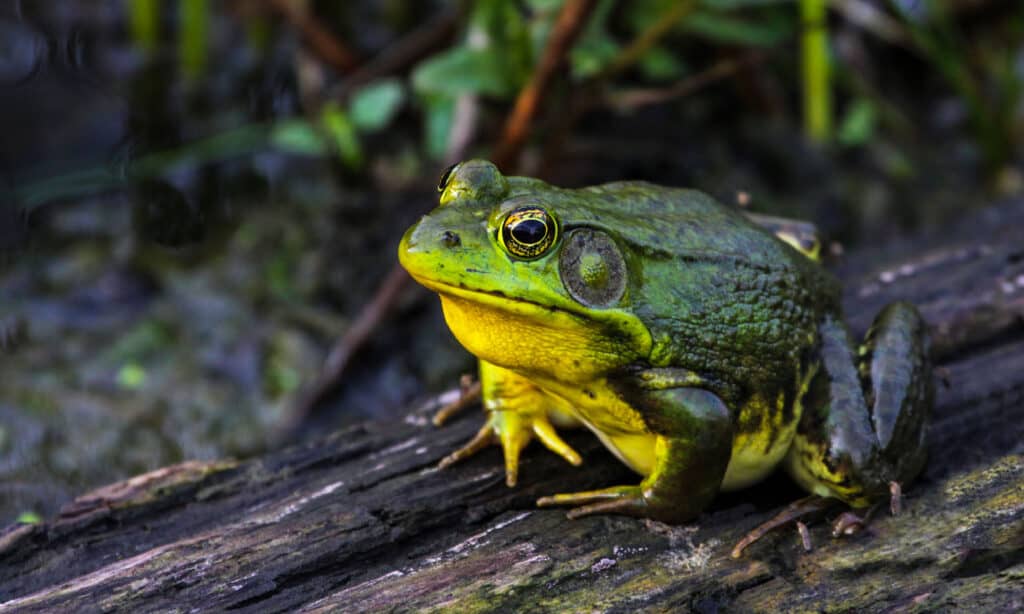
Unfortunately, American bullfrogs harm native populations.
©iStock.com/187715314
Switching gears to amphibians, let’s get to know the American bullfrog. This large, robust frog is easily recognized by its smooth, greenish-brown skin and round belly. American bullfrogs can grow up to 6 inches in length (not counting the legs), making them the largest frog species in North America. You can find them lounging around the water bodies of Colorado, soaking up the sun.
The Eating Habits of an Opportunistic Predator
American bullfrogs are voracious eaters. They’ll consume pretty much anything they can catch and swallow, including insects, small fish, crustaceans, and even other amphibians. They’re the apex predators in their ecosystem, lying in wait for unsuspecting prey to pass by, then lunging with a quick and forceful jump.
Unmasking the Danger
Is the American bullfrog dangerous? Not typically. While they are a top predator in their ecosystem, they pose little to no risk to humans. However, their population growth can pose ecological problems, as they can out-compete and even prey upon native species.
Practicing Safety with American Bullfrogs
When it comes to human interaction, it’s best to observe these creatures from a distance. In addition, their skin can secrete a substance that might irritate the skin or eyes, so avoid handling them unless absolutely necessary. If you do need to handle one, make sure to wear gloves and wash your hands thoroughly afterward. And, as always, remember to treat these dangerous animals in Colorado with respect and care.
8. Common Snapping Turtle: The Armored Beast
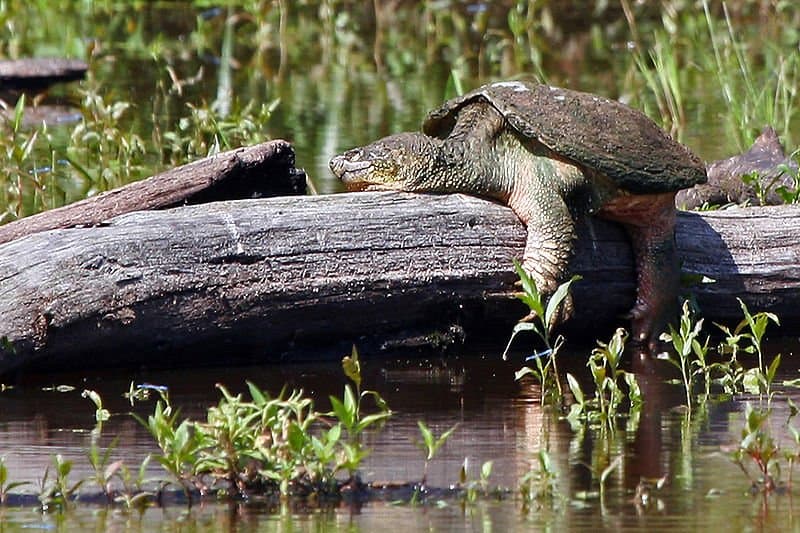
Snapping turtles
can easily break your finger with their powerful bite if you get too close.
©https://www.flickr.com/people/sherseydc/, CC BY 2.0, via Wikimedia Commons – License
Our final participant in this aquatic parade is the common snapping turtle. This formidable creature is one of the largest freshwater turtles in North America. With a rugged, spiked shell, a long tail, and a strong beak-like jaw, common snapping turtles can grow up to 20 inches in shell length. You’ll find them in many of Colorado’s lakes, ponds, and slow-moving rivers.
The Lifestyle of a Patient Hunter
Common snapping turtles are master hunters. They typically feed on fish, frogs, and even small mammals or birds. Then, with an ambush strategy, they’ll often lie in wait under a muddy bottom, striking quickly when potential prey wanders too close.
Assessing the Threat
The real question here is, are common snapping turtles dangerous? To put it plainly, they can be. While they prefer to avoid humans, a Snapping Turtle on land can be quite aggressive if it feels threatened. Their powerful jaws can deliver a strong bite, which can cause severe injury.
Safety Guidelines Around Snapping Turtles
When it comes to these armored beasts, the rule of thumb is to give them space. Never attempt to pick up a Snapping Turtle, as they have a long neck and can snap sideways, potentially causing serious harm. If you encounter one crossing a road and want to help it, use a long object to gently guide it in the right direction, always from behind. Always remember, these creatures deserve our respect and caution.
Key Takeaways
We’ve delved deep into the diverse world of Colorado’s lakes and rivers, exploring the lives of eight significant aquatic creatures. Each species, whether it’s a fish, amphibian, mammal, or reptile, adds a unique facet to our complex aquatic ecosystems.
Understanding these animals is crucial for both our safety and their conservation. In addition, knowledge about their behaviors, needs, and the risks they can pose helps us interact with them in a responsible and respectful manner.
The photo featured at the top of this post is © Danica Chang/Shutterstock.com
Thank you for reading! Have some feedback for us? Contact the AZ Animals editorial team.



